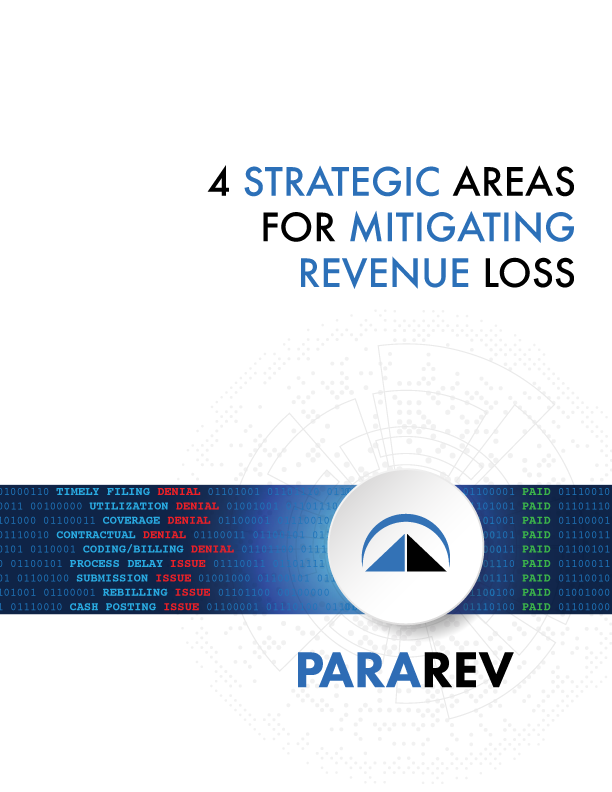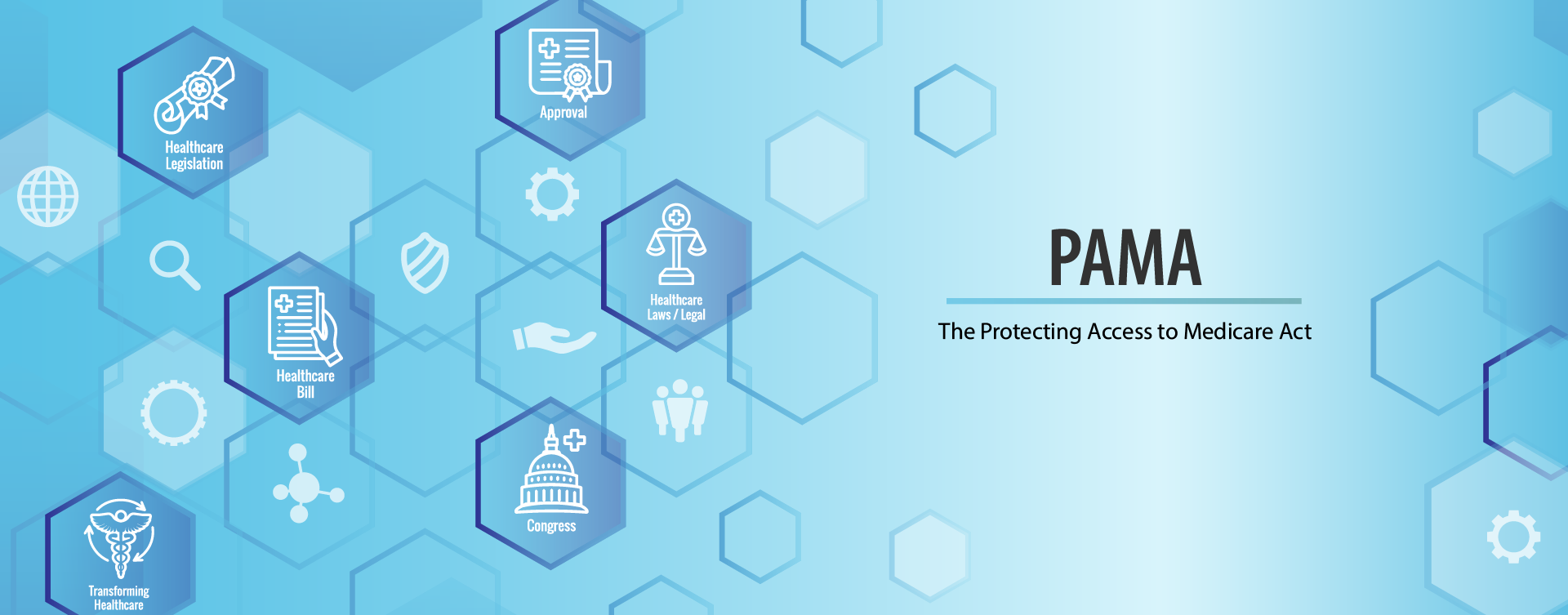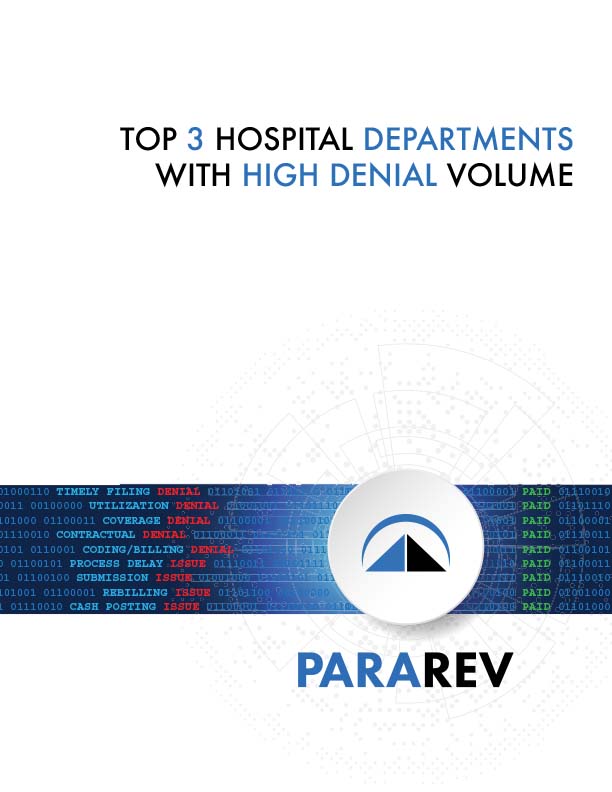Lorem ipsum dolor sit amet, consectetur adipiscing elit, sed do eiusmod tempor incididunt ut labore et dolore magna
What is the Protecting Access to Medicare Act of 2014 (PAMA)?
The PAMA law brought a wide variety of changes to Medicare, including the method by which Medicare will calculate the rates it will pay under the Clinical Lab Fee Schedule (CLFS). It requires Medicare to pay according to the weighted median rate of payments made by private insurers for the same lab test. This means Medicare must collect data from laboratory providers every three years in order to calculate the appropriate rate of payment.
Medicare collected data for the first time in 2017 but required only large regional and national laboratories to report. The weighted median payment rates from that limited data pool resulted in dramatically lower reimbursement on the majority of lab tests. Laboratory providers complained that the rates were inaccurate and inappropriately low, in part because the data used was from less than 1% of laboratory providers nationwide. In response to those concerns, Medicare added hospitals and physician practices to the list of entities required to report (“applicable laboratories”), beginning with the data collection period January 1, 2019, through June 30, 2019.
Lab providers, including some physician clinics and certain hospital outreach laboratories that perform specimen-only lab testing on the 14x Type of Bill (TOB), must report rates and volumes of payments received from commercial payors for lab tests between January 1 and June 30, 2019. The reporting window was originally scheduled for the first quarter of 2020, but has been delayed two years to the first quarter of 2022. Failure to report could result in fines of more than $10,000 per day.
The new mandate marks the second time Medicare has collected private payor lab rate payment data, but it’s the first time the requirement has been extended to hospitals that bill Medicare and other payors on the 14x TOB. Their initial effort in 2016 required that only large national and regional lab testing firms, such as LabCorp and Quest, report. CMS must collect private payor data every three years for use in setting rates under the CLFS.
The 2019 Outpatient Prospective Payment System (OPPS) Final Rule expanded the reporting obligation to include hospital outreach laboratories that submit Medicare claims for non-patient services if the hospital met the threshold of $12,500 in revenues paid by Medicare for services on the 14x TOB during the first six months of 2019. The rate reporting is due to CMS by the end of the first quarter of 2022.
Which hospital laboratories will be required to report lab payment rates?
According to CMS, “applicable laboratories” are required to collect and report private-payor, non-patient service lab rates. An applicable laboratory is: [1]
- A lab that bills Medicare Part B under its own National Provider Identifier (NPI); or, for hospital outreach laboratories, bills Medicare Part B on the Form CMS-1450 under type of bill (TOB) 14x; and
- A lab that meets the “majority of Medicare revenues” threshold (that is, receives more than 50 percent of its Medicare revenues from one or a combination of the CLFS or the Physician Fee Schedule (PFS) in a data collection period; and
- A lab that meets or exceeds the low expenditure threshold (that is, it receives at least $12,500 of its Medicare revenues from the CLFS in a data collection period).

Since test questions 1 through 3 are typically met by hospitals that perform non-patient lab testing, the main determinant of the obligation to report is the $12,500 threshold.
Medicare acknowledges that most hospital labs will meet the Majority of Medicare revenues test:
“Hospital outreach laboratories that bill Medicare Part B under the hospital’s NPI, and therefore determine applicable laboratory status based on its Medicare revenues from the 14x TOB, will most likely meet the majority of Medicare revenues threshold. They will most likely meet the majority of Medicare revenues threshold because their Medicare revenues are primarily, if not entirely, derived from the CLFS and or PFS. In other words, the revenues from the CLFS and or PFS services included in the numerator are essentially the same as the total Medicare revenues included in the denominator.”[2]
While the UB manual specifies that 14x TOB is for non-patient lab tests, California Medicaid (Medi-Cal) requires emergency department charges (ED) to be reported on the 14x type of bill. Hospitals in California, therefore, will need to report specimen-only testing claims and exclude claims for in-person medical services, such as ED charges, to ensure they’re only reporting non-patient lab charges.
Some physician offices that provide laboratory services will need to report if they have $12,500 or more in Medicare revenue for all clinical services, even though they bill on a CMS1500/837i claim form. Reporting for physician offices should nonetheless be relatively straightforward, since, unlike hospitals, they post by line-item in the patient accounting system.
What changes have been made in 2021 regarding PAMA?
The reporting timetable has been updated in response to the COVID-19 pandemic. Data collected from the period of Jan. 1, 2019-June 30, 2019, must be reported to Medicare between January 1 and March 31, 2022. This collection, validation and reporting cycle will repeat every three years to form the basis for an updated CLFS. The next data collection period will be January 1 through June 30 2025, with reporting due during the first quarter of 2026.
Figure 1: Table showing year for CDLT rates, data collection periods, data reporting periods and reduction cap by year [3]
| Year for CDLT Rates | Based on Data Collection Period | Based on Data Reporting Period | Reduction Cap |
| 2020 | January 1, 2016 – June 30, 2016 | January 1, 2017 – May 30, 2017 | 10% |
| 2021 | January 1, 2016 – June 30, 2016 | January 1, 2017 – May 30, 2017 | 0.0% |
| 2022 | January 1, 2016 – June 30, 2016 | January 1, 2017 – March 31, 2017 | 15% |
| 2023 | January 1, 2019 – June 30, 2019 | January 1, 2022 – March 31, 2022 | 15% |
| 2024 | January 1, 2019 – June 30, 2019 | January 1, 2022 – March 21, 2022 | 15% |
| 2025 | January 1, 2019 – June 30, 2019 | January 1, 2022 – March 31, 2022 | 0.0% |
Applicable laboratories are responsible for collecting three primary types of information, according to CMS:[4]
- The specific HCPCS code associated with the test
- The private payor rate for each test for which final payment has been made during the data collection period
- The associated volume for each test
The period for which data is to be collected includes dates of service from January 1 through June 30, 2019, as well as claims from earlier dates of service that were not paid until the 1/1/19-6/30/19 timeframe. For additional details on reporting requirements, visit CMS Medicare Learning Network Matters SE19006.
What are the penalties for PAMA non-compliance?
Applicable organizations may face civil penalties of up to $10,017 per violation per day if reporting is not complete, accurate and timely, according to CMS. There is no exception for Critical Access Hospitals. In its final rule, CMS noted that in situations where its review revealed that the data submitted was incomplete or incorrect, the agency would work with the Office of Inspector General (OIG) to assess whether a civil monetary penalty should be applied, and if so, what the appropriate amount should be based on the specific circumstances.[5] CMS also stated that it does not intend to assess monetary penalties for minor errors.[6]
What are some of the challenges hospitals face in collecting the PAMA-required data?
Many hospitals view the requirement as onerous because most don’t retain detailed payment rate data at the line-item level. Hospitals are especially challenged in reporting private payer rate details, since they typically don’t retain that information in their accounting systems, even though they are provided those details on the remittance advice.
Another challenge impacting some hospitals resulted from misinterpretation of a Medicare directive in 2014 that briefly advised hospitals to bill in-person service to patients on the 14X TOB. However, about six months later, CMS ordered hospitals to stop billing for these services on the 14X TOB. Hospitals discontinued the process once they realized it was non-compliant with HIPAA requirements, which specify what may be billed on a 14X TOB. At the same time, a new modifier was introduced which was declared not applicable to the 14X TOB, thereby adding to the confusion. The takeaway is that if a hospital didn’t use the 14X TOB for non-patient lab testing, it needs to be corrected right away. It’s unlikely an overpayment has occurred, but it is non-compliant to use the wrong type of bill to represent those services as in-person.
It is especially important for critical access hospitals to make sure they use the correct type of bill, because they could be overpaid on the cost reimbursement rate for services billed on an outpatient claim form that’s not a 14X TOB.
Why haven’t Medicare Administrative Contractors been talking about PAMA?
The Medicare Administrative Contractors (MAC) have no role in this process because submitted data goes directly to the Medicare national website and therefore does not flow through the regional MACs.
How can hospitals achieve PAMA compliance?
Even if your organization hasn’t started test rate collection and validation, it’s not too late to achieve compliance with the March 31, 2022 reporting deadline. Hospitals can immediately pull both paper and electronic 835s claims to begin assessing the total dollar amount and volume of the tests in question.
Alternatively, ParaRev provides compliance assistance through our comprehensive Lab Payment Reporting Analytical Services. Using Medicare outpatient claims data, we’ll help new and existing clients determine the type and volume of payments made through the Medicare 14x TOB. This will help determine whether the hospital has exceeded either the $12,500 Medicare threshold for the January-June 2019 reporting period, and therefore will need to report.
The PARA Data Editor additionally provides the ability to analyze electronic remittance files to quickly generate a spreadsheet of the allowable rates paid by CPT® codes on the 14x TOB. PARA can configure this electronic data into the required format for Medicare reporting. However, some clients will likely have received payments that will require manual research if they were not paid on a submitted 835 file. ParaRev is unable to research payments submitted on paper remittances.
PARA has developed a 30-minute online presentation that can help keep you compliant with PAMA laboratory rate and reporting requirements. This presentation provides detailed examples of some of the compliance challenges, providing vital information for all clinical laboratories.
It’s critical that hospital labs push to meet the PAMA reporting requirements, not only to eliminate the risk of onerous monetary penalties, but to help ensure the highest possible lab reimbursements in the future. Contact HFRI to learn more about how our Lab Payment Reporting Analytical Services can help you.
For addition information:
To learn more about the list of test codes subject to PAMA data collection and data reporting requirements click here. For more information about the private payer rate-based CLFS, click here.
- “Medicare Part B Clinical Laboratory Fee Schedule: Revised Information for Laboratories on Collecting and Reporting Data for the Private Payor Rate-Based Payment System,” MLM Matters, Centers for Medicare and Medicaid Services, Sept. 5, 2019.
- “Medicare Part B Clinical Laboratory Fee Schedule: Revised Information for Laboratories on Collecting and Reporting Data for the Private Payor Rate-Based Payment System.” MLM Matters, Centers for Medicare and Medicaid Services, Jan. 8, 2020.
- PAMA Regulations-Important Update. Medicare.gov
- “Medicare Part B Clinical Laboratory Fee Schedule: Revised Information for Laboratories on Collecting and Reporting Data for the Private Payor Rate-Based Payment System,” MLM Matters, Centers for Medicare and Medicaid Services, Sept. 5, 2019.
- “Medicare Program; Medicare Clinical Diagnostic Laboratory Tests Payment System, Final rule,” Federal Register, June 23, 2016.
- Ibid

Download our free whitepaper that discusses four key areas hospitals can address right now to mitigate or reverse revenue losses during the pandemic.
Related Posts
None found









